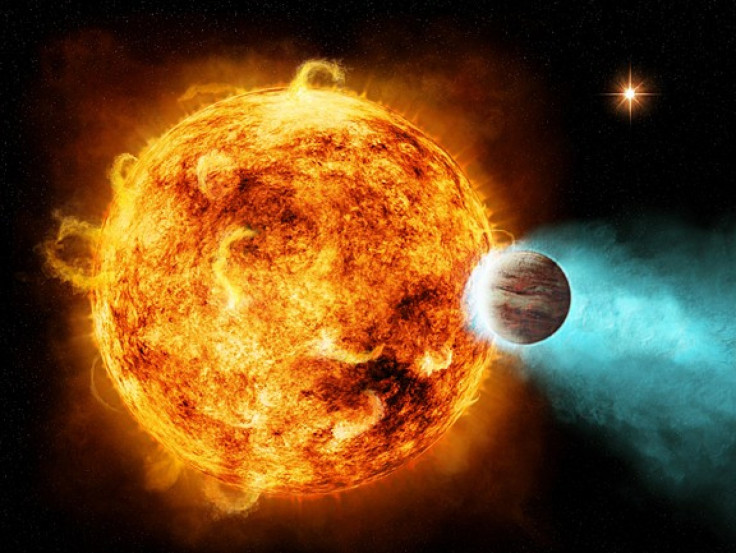Star lashes out on Planet with X-Ray Blasts

A single star is brutally attacking a close by alien planet, through sweeping blasts of X-rays that are causing mass destruction, a study has found.
The gas planet CoRoT-2b, is losing five million tons of matter per second from the X-ray bursts that are 100,000 times more powerful than what the Earth receives from the sun.
This planet is being absolutely fried by its star, said study lead author Sebastian Schroeter, of the University of Hamburg in Germany, in a statement. What may be even stranger is that this planet may be affecting the behavior of the star that is blasting it.
CoRoT-2 is one of the most unusual planetary systems known to date, according to the study, as the planet has an extremely active star that orbits at a very close distance to the planet.
The star, named CoRot-2a, is located about 880 light-years from Earth, Optical and is between 100 million and 300 million years old, meaning it's fully formed, but yet the stars actions are extremely youthful which is what leads to the extreme activity, researchers said.
Because this planet is so close to the star, it may be speeding up the star's rotation and that could be keeping its magnetic fields active. If it wasn't for the planet, this star might have left behind the volatility of its youth millions of years ago, explained University of Hamburg researcher Stefan Czesla.
Some researchers say that the destruction to the planet is actually useful because the planet is simply too big. It is believed to be a form of self-correction by some researchers that will eventually die down with time, io9.com reported.
Other observations suggest that CoRot-2a might have a stellar companion that orbits at about 1,000 times the Earth-sun distance although Instruments have not picked up an X-ray signal from this star, Space.com reported.
We're not exactly sure of all the effects this type of heavy X-ray storm would have on a planet, but it could be responsible for the bloating we see in CoRot-2b, Schroeter said. We are just beginning to learn about what happens to exoplanets in these extreme environments.
© Copyright IBTimes 2024. All rights reserved.











